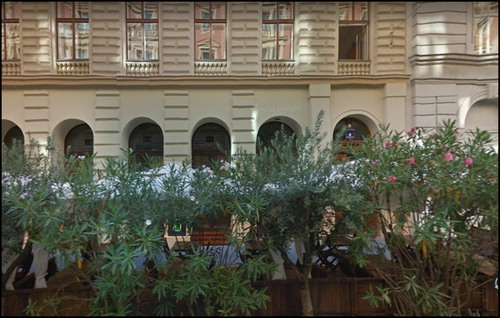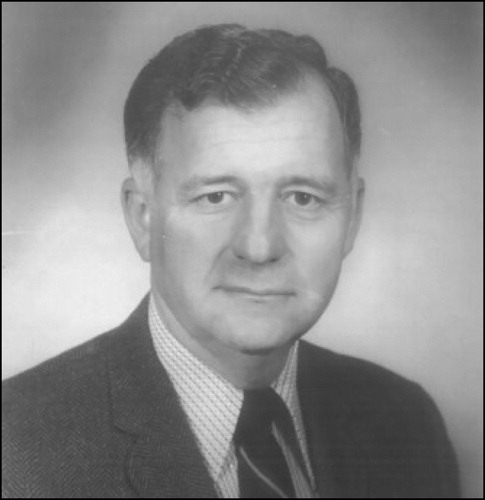Life seemed “pretty idyllic” to E.B., an 8-year-old boy living in the beautiful, historic city of Vienna, Austria, in the spring of 1938. As he recalled:
We lived in one of the elegant areas of Vienna (). I went to an excellent school and had private tutors in English and piano. My parents were very interested in opera, and by the time I was 6 they had begun taking me to the Vienna State Opera. Vienna was a gracious city in the 1930s, the cultural capital of central Europe.Citation1
His parents, too poor at the time to go to college, had built a successful wholesale clothing business. They had high aspirations for E.B. and his younger brother. Their home was near the university, and when walking in the area his mother would point to the school and remind E.B. that “you will be a professor there one day.”Citation1
Life took a drastic change on March 12, 1938, when the Nazis staged the Anschluss (union) takeover of Austria. As E.B. reflected, “I recall vividly the enthusiastic crowds welcoming Hitler (a native of Austria) and his troops marching into Vienna.”Citation1 Little did they know what evil lay ahead, especially for the 185,000 Jewish residents, or they would not have welcomed him home “like a prodigal son.”
SS officers promptly liquidated all Jewish businesses, including his father’s. The officer specifically in charge of the latter, a man named Pavlik, had reportedly been imprisoned briefly for his involvement in the assassination of Chancellor Dollfuss, an Austrian leader who had banned the Nazi party. The situation worsened overnight in May 1938, when his 34-year-old father was arrested and driven to the railroad station in an open truck with 15 to 20 other Jewish men, destined to be transported to one of the death camps. The following morning, E.B.’s mother, Claire, managed to convince officer Pavlik that he needed her husband to help liquidate the rest of his business, that he was the only one knowledgeable to do so and that it would make Pavlik look good. Pulling rank, Pavlik managed to get William extracted from the train just in time.
The arrest convinced William that he needed to get his family out of the country as soon as possible. Two months later, on July 30th, he told his family that they were going on a picnic and that they wouldn’t need to take any supplies or luggage. Traveling by trolley, taxi, and finally by train, and likely facilitated by bribes at any checkpoints, the family made it through Switzerland and Paris to London, where a business acquaintance of William’s provided assistance to the “totally destitute family.” Their final destination was New York City, in November 1939, where they were sponsored by a maternal aunt.
The family was extremely fortunate to get out of Nazi-occupied territory, to avoid Kristallnacht (“The Night of Broken Glass”), which came on November 9–10, 1938. German SA paramilitary troops ransacked Vienna and other areas, shattering glass in homes, businesses, and synagogues and setting fires to all. About 100 Jewish citizens of Vienna were killed and 30,000 others sent to concentration camps. German police officers and firemen did nothing to deter the violence. This was a precursor to Hitler’s “final solution” program. Only about 800 of the original 185,000 Jewish individuals in Vienna eventually survived the war, hiding in various places in the city.
E.B. fulfilled his mother’s prediction that one day he would become a university professor. As his former colleague, John Ross, Jr., correctly stated, he became “probably the most famous academic cardiologist of his generation.”Citation2
I was so fortunate to do a year of clinical cardiology fellowship in 1968–1969 under the program E.B.—Eugene Braunwald—initiated at the University of California, San Diego. At age 42 then (), Dr. Braunwald had already published over 700 academic articles, on most topics I needed to deal with. Even today, at age 91, he continues to provide sage medical advice to his colleagues, as evidenced by his recent editorial on the management of stable coronary artery disease published in the New England Journal of Medicine.Citation3
What a great loss to humanity, not to mention academic cardiology, if the young family at Number 4 Zelinkagasse had fallen victims of the Nazis, as did thousands of their fellow Vienna Jewish citizens. As I reflect back upon his life, I see how easily the world could have been deprived of this remarkable man had his mother not had the wisdom of convincing SS Officer Pavlik to pull his father off the train, and for his father to arrange an exodus soon thereafter to Switzerland and eventually London and New York City.
Acknowledgments
My thanks to Stacie Waddell for her help with the figures and to Fred Boyer for preparing the manuscript.
- Roberts WC. Eugene Braunwald, MD: a conversation with the editor. Am J Cardiol. 1998;82:93–108.
- Ross J. Jr. Eugene Braunwald. Clin Cardiol. 1994;17(3):160–162. doi:10.1002/clc.4960170310.
- Antman EM, Braunwald EB. Managing stable ischemic heart disease. N Engl J Med. 2020;382(15):1468–1469. doi:10.1056/NEJMe2000239.


